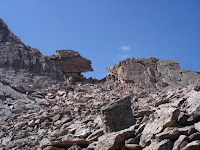 |
| Mary Stuart, Queen of Scots |
There were always the exceptions. Women in ancient Greece were not allowed in the Olympics, so they held their own Games of Hera every four years. Mary, Queen of Scots was an avid golfer, and called her assistants “cadets”. The first caddies. During her reign (1542-67), the famous golf course of St. Andrews was built. Women in Regency times walked—Elizabeth Bennet in Pride & Prejudice enjoyed a good, hardy stroll. There have been a few boxers, fisher-women, horse racers, runners, hot-air balloonists, and archers.
 |
| May in "Age of Innocence" |

The bicycle changed everything—though not because it was a way to get exercise or that it was considered a sport, but that it finally allowed women autonomy. They could move quickly from Point A to Point B by themselves. And they didn’t need a man to come along as a chaperone. I think about the feeling of freedom a woman would have felt the first time she rode a bicycle. The breeze through her hair, the exhilaration of using her limbs until they burned… And the choice involved to go somewhere. Even that. Especially that. Choice.
As bicycles gained popularity in the 1880’s, women’s clothing was adapted for ease of movement. No more bustles! As early as 1850 Amelia Bloomer developed “bloomers” to wear under a skirt, thus giving women more freedom of movement. With bicycles, the bloomers were ends in themselves. How risque! Some considered women who rode bicycles whores... Yet in the decade of 1890-1900 over a million women would ride bicycles. Beyond all the other sports, bicycling was a wide-spread hit.

During this time many sports became womanized: rowing, hiking, fencing, lawn tennis, tennis, croquet, sailing, and swimming. The summer resort of Newport, Rhode Island, encouraged all these activities. I have some of my characters deal with bicycling, swimming, and sailing in An Unlikely Suitor. Even baseball was played by women: According to this wonderful timeline site, in 1875 two women’s teams, the "Blondes" and "Brunettes", played their first match. “Newspapers heralded the event as the 'first game of baseball ever played in public for gate money between feminine ball-tossers.'"
 |
| Boulder Field of Long's Peak |
With the doors to sports open, some women took it to extremes. In 1891 Mary French Sheldon led an expedition to East Africa. That same year Beatrice Von Dressden jumped with a parachute from a hot air balloon. This was her first jump. First? Are you kidding me? She did it again? Get this woman a place on “Fear Factor”!
 Not everyone thought women should exert themselves and there were many articles condemning this change in women’s lives. Many men seemed intimidated by a strong, active woman. But in 1892, the YMCA devoted an issue to women, saying exercise for women was a good thing.
Not everyone thought women should exert themselves and there were many articles condemning this change in women’s lives. Many men seemed intimidated by a strong, active woman. But in 1892, the YMCA devoted an issue to women, saying exercise for women was a good thing.Maybe so, but that doesn’t mean I have to like it! And as with most acts of freedom, I appreciate having the choice.//Nancy






 Besides the photograph of my grandmother which I mentioned above, the photographs, such as this one on the left, of pioneer families standing proudly in front of their homesteads inspired me with a sense of the courage and vision they must have had.
Besides the photograph of my grandmother which I mentioned above, the photographs, such as this one on the left, of pioneer families standing proudly in front of their homesteads inspired me with a sense of the courage and vision they must have had.
















